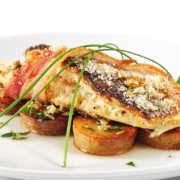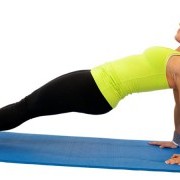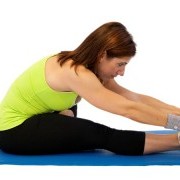Jogging causes more harm than good?
Get Eccentric“[Exercised induced injuries]…can be as high as 55% among men and women involved in jogging programs” – The American Heart Association
How’s that possible? How can jogging hurt more than half the people who do it?
Every mile we run, our feet hit the ground about 900 times. Let’s say you weigh 150lbs. That means for every mile you run, you are smashing 135,000 pounds of force against your joints, ligaments, and everything else you’ll need for the rest of your life. That like dropping 37 Toyota Camry’s on your joints, ligaments, and all that other goodness.
Jogging causes more harm: What are the benefits?
That’s why jogging hurts more than half the folks who do it.
It’s not about exercising more. It’s about exercising less, smarter.
Sampling of Sources
- Haskell WL, Lee IM, Pate RR, Powell KE, Blair SN, Franklin BA, Macera CA, Heath GW, Thompson PD, Bauman A; American College of Sports Medicine; American Heart Association. Physical activity and public health: updated recommendation for adults from the American College of Sports Medicine and the American Heart Association. Circulation. 2007 Aug 28;116(9):1081-93. Epub 2007 Aug 1. PubMed PMID: 17671237.
- Conn JM, Annest JL, Gilchrist J. Sports and recreation related injury episodes in the US population, 1997-99. Inj Prev. 2003 Jun;9(2):117-23. PubMed PMID: 12810736; PubMed Central PMCID: PMC1730974.
- Pollock ML, Gettman LR, Milesis CA, Bah MD, Durstine L, Johnson RB. Effects of frequency and duration of training on attrition and incidence of injury. Med SciSports. 1977 Spring;9(1):31-6. PubMed PMID: 870782.

exercise less for a healthier heart?
Get EccentricIn the last post I mentioned how SANE amounts to eating more and exercising less—smarter—and hinted that we eat more—smarter—by increasing the quality of our calories. Before we get into what determines the quality of calories, let’s touch on the exercise less—smarter—bit.
We exercise less–smarter–much like we eat more–smarter…focusing on quality instead of quantity. We do less, but more intense, exercise.
Oh no! But what about our hearts?! Don’t we have to exercise a lot to boots our heart health? According to folks who make more money the more we exercise: Yes. According to studies: No.


The “more exercise = more heart health” myth comes from studies showing long bouts of cardio boosting our VO2 max. Our VO2 max is, “…an expression of the functional health of the combined cardiovascular, pulmonary, and skeletal muscle systems.” A higher VO2 max generally indicates a healthier heart. So the more exercise the healthier our heart, right? Not so much.
While lots of low quality (aka low intensity) exercise does increase our VO2 max, researchers have repeatedly revealed a little high quality (aka high intensity) exercise, “…is significantly more effective…in improving VO2 max.” Do we need to exercise to help our hearts? Yes. Do we need to exercise a lot to help our hearts? No. Does more exercise help our hearts more? Not if it comes at the expense of exercise quality.
For example, researcher Helgerud found that less, but higher quality, exercise improved VO2 max more than the same amount of work (i.e. same number of calories burnt) via moderate or low quality exercise. In Helgerud’s words:
“…[high quality exercise] is significantly more effective than performing the same total work at either lactate threshold or at 70% heart rate max, in improving VO2 max.”
Researcher Tyldum went a step further. Tyldum divided folks into three groups and fed them all artery stressing meals. The differences between the groups was that one didn’t exercise, another did moderate quality exercise, and the last one did high quality exercise. While the two groups who exercised burnt the exact same number of calories, the high quality group got double the heart health benefits in half the time. Twice the heart health benefits for half the cost. Not too shabby. The researcher concluded:
“These findings reveal a clinically relevant protective effect of acute exercise on the vasculature that is clearly exercise intensity [aka quality] dependent.”
One more for today. Harvard researcher Tanasescu published a study in the Journal of the American Medical Association which followed 44,452 folks over ten years. Across the 44,452 folks the quality of exercise correlated with a reduced risk of dying from coronary heart disease independent of the quantity of exercise performed. Tanasescu put it like this:
“Average exercise intensity [aka quality] was associated with reduced risk independent of the…hours spent in physical activity.”
Excess fat and related health problems aren’t quantity problems. They are quality problems. It’s not about eating less, and this is just the tip of the iceberg showing it’s not about exercising more. It’s about using our brains instead of brute force. It’s about eating more and exercising less, smarter.
Sampling of sources
- Myers J, Gullestad L, Vagelos R, Do D, Bellin D, Ross H, Fowler MB. Clinical, hemodynamic, and cardiopulmonary exercise test determinants of survival in patients referred for evaluation of heart failure. Ann Intern Med. 1998 Aug 15;129(4):286-93. PubMed PMID: 9729181.
- Helgerud J, Høydal K, Wang E, Karlsen T, Berg P, Bjerkaas M, Simonsen T, Helgesen C, Hjorth N, Bach R, Hoff J. Aerobic high-intensity intervals improve VO2max more than moderate training. Med Sci Sports Exerc. 2007 Apr;39(4):665-71. PubMed PMID: 17414804.
- Tyldum GA, Schjerve IE, Tjønna AE, Kirkeby-Garstad I, Stølen TO, Richardson RS, Wisløff U. Endothelial dysfunction induced by post-prandial lipemia: complete protection afforded by high-intensity aerobic interval exercise. J Am Coll Cardiol. 2009 Jan 13;53(2):200-6. PubMed PMID: 19130989; PubMed Central PMCID:PMC2650775.
- Tanasescu M, Leitzmann MF, Rimm EB, Willett WC, Stampfer MJ, Hu FB. Exercise type and intensity in relation to coronary heart disease in men. JAMA. 2002 Oct 23-30;288(16):1994-2000. PubMed PMID: 12387651.
- Tremblay A, Simoneau JA, Bouchard C. Impact of exercise intensity on body fatness and skeletal muscle metabolism. Metabolism. 1994 Jul;43(7):814-8. PubMed PMID: 8028502
- Gibala M. Molecular responses to high-intensity interval exercise. Appl Physiol Nutr Metab. 2009 Jun;34(3):428-32. Review. PubMed PMID: 19448710.
- Sesso HD, Paffenbarger RS Jr, Lee IM. Physical activity and coronary heart disease in men: The Harvard Alumni Health Study. Circulation. 2000 Aug 29;102(9):975-80. PubMed PMID: 10961960.
- Earnest CP. Exercise interval training: an improved stimulus for improving the physiology of pre-diabetes. Med Hypotheses. 2008 Nov;71(5):752-61. Epub 2008 Aug 15. PubMed PMID: 18707813.
- Christmass MA, Dawson B, Arthur PG. Effect of work and recovery duration on skeletal muscle oxygenation and fuel use during sustained intermittent exercise. Eur J Appl Physiol Occup Physiol. 1999 Oct;80(5):436-47. PubMed PMID: 10502077.
- Irving BA, Davis CK, Brock DW, Weltman JY, Swift D, Barrett EJ, Gaesser GA, Weltman A. Effect of exercise training intensity on abdominal visceral fat and body composition. Med Sci Sports Exerc. 2008 Nov;40(11):1863-72. PubMed PMID:18845966; PubMed Central PMCID: PMC2730190.
- Gibala MJ, McGee SL. Metabolic adaptations to short-term high-intensity interval training: a little pain for a lot of gain? Exerc Sport Sci Rev. 2008 Apr;36(2):58-63. Review. PubMed PMID: 18362686.
- Gibala MJ, Little JP, van Essen M, Wilkin GP, Burgomaster KA, Safdar A, Raha S, Tarnopolsky MA. Short-term sprint interval versus traditional endurance training: similar initial adaptations in human skeletal muscle and exercise performance. J Physiol. 2006 Sep 15;575(Pt 3):901-11. Epub 2006 Jul 6. PubMed PMID: 16825308; PubMed Central PMCID: PMC1995688.



We strive to be fully accessible and our website is audited and compliant with Web Content Accessibility Guidelines 2.1.
If you would like to talk to a product specialist to order by phone or encounter any issues while using this site, please call us and we will be happy to assist: (347) 979-1735





